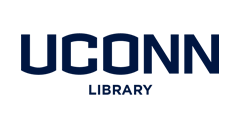Date of Completion
Spring 5-1-2025
Thesis Advisor(s)
Sudha Srinivasan
Honors Major
Allied Health Sciences
Disciplines
Occupational Therapy | Public Health | Public Health Education and Promotion
Abstract
Unilateral cerebral palsy (UCP) is a subtype of cerebral palsy that impacts movement and coordination on one side of the body. This condition often leads to reduced use of the affected upper extremity in daily tasks. This pilot study explored the feasibility and potential of a joystick-operated ride-on-toy training program as an engaging home-based and play-based intervention to promote affected upper extremity use in children with UCP. Five children from a larger sample of 15 children with a diagnosis of UCP between the ages of 3 and 8 years old were used as data for this thesis. This study included a six-week control phase during which children received treatment-as-usual, followed by a six-week intervention phase in which in addition to treatment-as-usual, children had training sessions twice a week using the modified joystick-operated ride-on toy to practice navigation and object-based upper extremity tasks. Datavyu software was used to code the non-navigational, object-based task sections of the videotaped sessions to categorize each upper extremity movement by type, laterality, independence, and fine versus gross motor. Sessions from early (week 1), mid (week 3), and late (week 6) sessions were compared to one another. Behavioral coding and analysis showed that over time children improved in their use of their affected arm during both unimanual and bimanual activities during training sessions. Moreover, children improved independent use of their affected arm with a decrease in the amount of adult assistance required-during performance of object-based functional tasks.Throughout the sessions, children became more independent and increased their use of their affected side to engage in functional task-related activities. These findings support existing literature highlighting the role of motivation and child engagement in successful therapy outcomes. These results provide hope for future play-based interventions and the utilization of a joystick-operated ride-on toy that can be used to create meaningful and accessible alternatives to upper limb therapies.
Recommended Citation
Carlmark, Megan, "Quality of Affected Upper Extremity Use During a Ride-On Toy-Based Training Program in Children with Unilateral Cerebral Palsy: A Pilot Study" (2025). Honors Scholar Theses. 1086.
https://digitalcommons.lib.uconn.edu/srhonors_theses/1086

